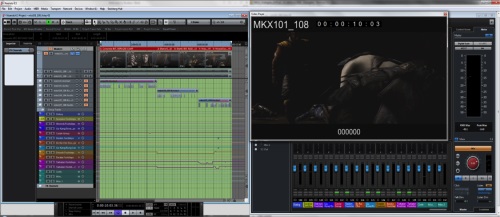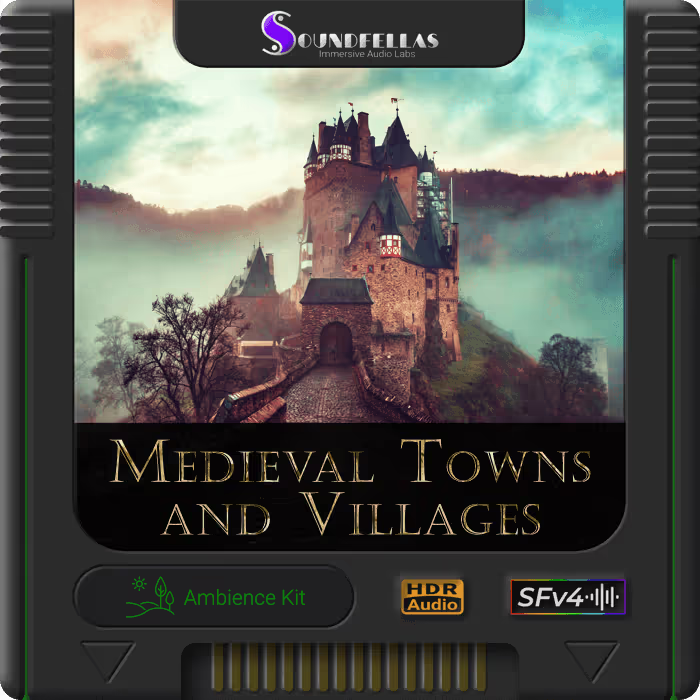Shaun’s foley solution was a combination of custom recordings, sample libraries, and midi. Get the details below, and be sure to check out the special video at the end of the post to hear the foley sounds in isolation. Here’s his post – reprinted with his kind permission.
When I began my contract at Netherrealm Studios back in July of 2014, Rich Carle, Netherrealm’s audio director, informed me that one of my primary tasks would be to “own the foley process” for Mortal Kombat X’s Story Mode over the next several months. Little did I know what I was in for…
The team decided to take a different approach to foley for this game.
The team decided to take a different approach to foley for this game. Typically in visual media (TV, film, games), footstep, cloth, and interaction foley is performed live to picture, and then cleaned up and edited in post, if need be. In my experience, the largest amount of time spent in foley is on footsteps. Timing, performance, and volume all need to be practiced multiple times to picture, memorizing the scene and its nuances, until you’ve hopefully captured your best take.
In games and animation (where production sound is absent and all audio needs to be created from scratch), a 7 minute scene with 6 characters, all needing footsteps (with varying shoe types) performed to picture can quickly grow to be time consuming with diminishing returns. Also take into account the nature of animation and game design. In film or TV, the visual aspects of a character are locked. For example, after picture lock, you can count on a certain character in a specific scene having the same shoe type, for it to not be raining, and for the character’s costume to remain the same.
In games, where dozens of people are simultaneously refining environments, effects, character models, etc., this is not the case, and any one item in the foley track in a scene may need to be swapped quickly to match something visual that has changed. Hopefully you can see how important time, energy, and flexibility were when creating audio for MKX’s story mode.
Our solution? There are currently a few companies offering MIDI solutions to our foley problem, specifically for footsteps. We initially decided upon 2:
• Signo SFX-Instruments
• Foley Collection
Both services provide the same thing: individual footfalls for a variety of surfaces and shoe types, performed at varying volumes and mapped to keys in custom patches that work in Native Instruments’ Kontakt. This allowed us the option to, say if a surface changed or character costume was altered, easily swap out the patch for an already performed MIDI region. Timing and volume remain the same, but our surface or shoe type could be altered on the fly. This still requires quite a bit of time, as footfalls need to be performed to picture in real-time.
However, unlike recording in a foley booth where if a timing or volume mistake was made for any one footfall, with MIDI this is no problem
However, unlike recording in a foley booth where if a timing or volume mistake was made for any one footfall, with MIDI this is no problem; you could finish your performance and open the MIDI region, nudge notes for precise timing and change any volumes on the fly. Hell, swap the patch entirely while all of the data that was needed to be performed in real-time remains unchanged.
As for cloth and interaction foley:
This was either created from foley recordings done in house, or designed using a mixture of the former and library material, and then edited and placed accordingly. Here is a picture of a typical foley session in Nuendo. Note the separation of scenes and Kontakt instances based on ground type and MIDI routing to group tracks for easy stem bouncing of each individual character:

And here’s a zoomed view of a typical amount of footstep patches in one instance of Kontakt, and the MIDI performances associated with each character and their footstep patch:

We later contracted John Roesch and his foley team at Warner Brother’s Sound Studios in Burbank and had them record additional footfalls and scuffs, which we then edited and programmed into our own Netherrealm Footstep Foley patches for use in Kontakt. This ended up being the go-to material for footsteps.
I believe our combination of MIDI patches for footsteps in conjunction with traditional foley recording and editing yielded a great result and saved a ton of time and hair pulling
In retrospect, I believe our combination of MIDI patches for footsteps in conjunction with traditional foley recording and editing yielded a great result and saved a ton of time and hair pulling, especially for the amount of times scenes changed throughout development. There were additional surfaces we felt we could have used towards the end, particularly raised wood and corrugated metal, but I was able to design something that sounded just fine.
This video highlights footstep, cloth, and interaction foley using the processes outlined above. Anything we classified as sound design (punches, characters breaking items, etc.) have been omitted. VO is included for context (warning: the video is graphic):




